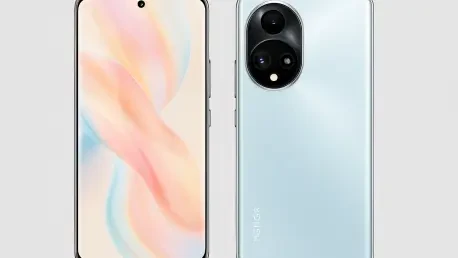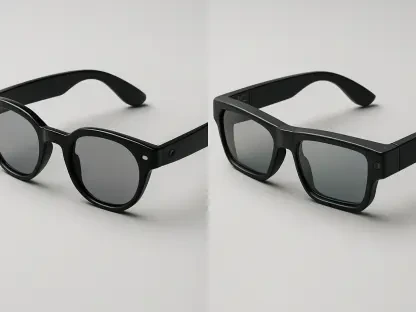I’m thrilled to sit down with Oscar Vail, a renowned technology expert whose insights into emerging fields like quantum computing, robotics, and open-source projects have made him a trusted voice in the industry. Today, we’re diving into the newly unveiled Honor 500 series, a lineup that’s turning heads with its sleek design, powerful specs, and innovative features. In our conversation, we’ll explore the inspiration behind its bold look, the engineering feats that pack so much into a slim frame, the significance of its durability ratings, the standout display technology, the strategic choice of chipsets, and what these devices mean for smartphone enthusiasts. Let’s get started.
What inspired the design of the Honor 500 series, particularly with the camera plateau on the back that seems to echo some familiar aesthetics?
The design of the Honor 500 series was driven by a desire to blend modern elegance with functional innovation. We took inspiration from various industry trends, including the distinct camera visor style that’s become iconic in recent years. However, our goal was to reinterpret this in a way that feels fresh and aligns with Honor’s identity. The camera plateau isn’t just about looks—it’s ergonomically designed to house the powerful 200MP main shooter and additional lenses while maintaining a balanced grip. We spent a lot of time refining the silhouette to ensure it stands out while still being practical for everyday use.
How did you strike a balance between drawing from other designs and ensuring the Honor 500 series has its own unique identity?
It’s always a fine line to walk. We studied what works in the market—things like clean lines and premium materials—but we focused on infusing elements that are distinctly Honor. For instance, the aluminum frame and glass back aren’t just there for durability; they’re crafted with subtle textures and color options like Aquamarine and Starlight Powder that give the device a personality of its own. We also prioritized user feedback, ensuring the design feels intuitive and comfortable, which sets it apart even if some visual cues feel familiar.
Both the Honor 500 and 500 Pro are incredibly slim at just 7.8mm thick while weighing around 200 grams. What kind of engineering went into fitting so much tech into such a compact build?
Packing high-end components into a frame this thin was no small feat. We had to rethink every layer of the device, from the motherboard layout to the battery design. The 8,000mAh Si-C battery, for instance, uses advanced silicon-carbon technology to maximize capacity without adding bulk. We also worked closely with our component suppliers to miniaturize parts without sacrificing performance. It’s a meticulous process of shaving off fractions of a millimeter wherever possible while ensuring thermal management and structural integrity aren’t compromised.
Were there any specific challenges in maintaining durability with such a slender design?
Absolutely. A thinner phone can be more vulnerable to bending or impact damage, so we reinforced the aluminum frame to act as a rigid backbone. The glass back is also treated with a special coating to resist scratches and minor drops. We ran countless stress tests to simulate real-world scenarios—think accidental drops or pressure in a tight pocket. Balancing a lightweight feel with robustness meant iterating on materials and assembly techniques until we got it right, and the IP68 and IP69K ratings are proof of that effort.
Speaking of those ratings, can you break down what IP68 and IP69K mean for everyday users of the Honor 500 series?
Sure, these ratings are all about peace of mind. IP68 means the phone is fully protected against dust and can withstand being submerged in up to 1.5 meters of water for 30 minutes. IP69K takes it a step further, ensuring the device can handle high-pressure, high-temperature water jets—think intense cleaning or accidental exposure to harsh conditions. For everyday users, this translates to a phone that can survive a spill, a rainy day, or even a drop in a pool without skipping a beat. It’s built to keep up with life’s unpredictability.
Let’s talk about the display. With a 6.55-inch LTPO OLED boasting a 120Hz refresh rate and up to 6,000 nits of brightness, what drove the decision to go with these specifications?
We wanted the display to be a centerpiece of the user experience. The LTPO OLED technology allows for dynamic refresh rates, which means the screen can drop as low as 1Hz when you’re just reading text to save battery, or ramp up to 120Hz for smooth scrolling and gaming. The 6,000 nits peak brightness was chosen to tackle visibility in direct sunlight—whether you’re navigating outdoors or watching a video, the screen stays vivid and clear. It’s about delivering a premium visual experience no matter the environment.
How does that high brightness level enhance the experience, especially in outdoor settings?
High brightness is a game-changer outdoors. At 6,000 nits, the display can overpower even the harshest glare, so you’re not squinting to read a message or check a map under the midday sun. It also improves color accuracy and contrast in bright conditions, so photos and videos look true-to-life rather than washed out. We’ve had users tell us it’s like having a mini TV in their pocket, even on a beach or a sunny hike, and that’s the kind of feedback we aimed for with this spec.
With the Honor 500 Pro featuring the Snapdragon 8 Elite chip and the standard 500 using the Snapdragon 8s Gen 4, what was the reasoning behind choosing different processors for each model?
It’s all about catering to different user needs. The Snapdragon 8 Elite in the Pro model is a top-tier chipset designed for power users—think hardcore gamers, content creators, or anyone running intensive apps with up to 16GB of RAM and 1TB storage. The Snapdragon 8s Gen 4 in the standard 500 is still incredibly capable but tuned for efficiency and value, targeting users who want flagship-level performance without needing the absolute cutting edge. This way, we offer choice without compromising on quality across the lineup.
How do these chipsets impact performance in practical scenarios like gaming or multitasking?
The difference shines in demanding tasks. With the Snapdragon 8 Elite, the Pro model handles heavy games at max settings with zero lag, and it juggles multiple apps—like editing a 4K video while streaming—without breaking a sweat. The 8s Gen 4 in the standard model is no slouch; it’s great for casual gaming and everyday multitasking, but you might notice slightly longer load times in extreme scenarios. Both chips are optimized with MagicOS 10 on Android 16, so the experience feels fluid, but the Pro is built for those who push their device to the limit.
What’s your forecast for the future of smartphone design and technology, especially considering innovations like those in the Honor 500 series?
I think we’re heading toward even greater integration of AI and efficiency in smartphones. Designs will continue to get sleeker, with foldable and flexible displays becoming more mainstream as durability improves. Battery tech, like the Si-C cells in the Honor 500 series, will evolve to offer even longer life and faster charging. I also expect cameras to push boundaries with computational photography, making professional-grade shots accessible to everyone. Ultimately, phones will become more personalized, adapting to individual habits through smarter software and hardware synergy, and I’m excited to see how Honor contributes to that evolution.









